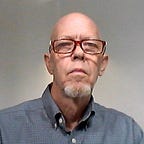Solar Villages and Farms
About Solar Arrays and Concentrators — We Aim To Please
With the mirrors, mind you.
But seriously, folks. We need to have a discussion. Either that or hand all this solar and “Green” infrastructure to Big Oil.
Because (hint) they’ll just keep doing things the way they’ve always done them.
We really don’t have time to screw around anymore. We surely can’t spend money like big oil. We can either await our fate, whatever form it might take, or we can try to salvage ourselves. Though a magical rescue might not be the least bit possible at such a late date. Our collective magical thinking got us into all these existential crisis situations in the first place. What heroes can save us? Can we expect divine intervention, or is that exactly what’s happening — not in a good way.
Well, no matter what, it’s crucial to understand some scientific facts that are known to some of us, but are drowned out by others’ prolific and often ignorant articles . . . on certain broad subjects. Things like climate, industrialization, alternative energy, population, . . . and all the other appropriate tags.
The most important questions involve things like, where, how far away, and how deep did they have to dig to get the ore that makes the steel or the lithium batteries used in this project? Or even a simple question, like um, how much does your solar project weigh? How did you bring all these parts here; how did you house and feed the workers?
How long will it take to amortize your financing? Who did finance this project? What were the ‘opportunity costs’ to others who didn’t get their loans?
Both Concentrated Solar Power [CSP] and Photovoltaics [PV] can involve mirrors.
While I’d never design an array with such massive, utility-level infrastructure as seen in the above photo, I very well might have at least one modest power tower that could melt the sand needed to make mirrors. My mirrors would be relatively small and close to their ‘targets’ so that the light beams would spread far less.
The thermodynamics of solar power create huge limitations on what is truly possible, assuming that “green” means green. Green can’t mean industrial-scale projects with huge environmental, financial, and political debts before they generate their first kilowatt.
In a good solar location, the average power coming from the sun is 100 watts per square meter — about forty inches by forty inches. Picture a 100 watt light bulb shining on a table that size. That’s the best you’re going to get.
I truly don’t even know whether my solar villages will even need to make solar electricity. There are other things that can be done with the energy.
Maybe I’ll make just a bit of electricity — enough for a refrigerator or microwave, or both. But that’s just rural Panama talking — where I live now. When the power goes out here, nothing changes. People keep working or visiting each other. Everything here is powered by sunlight, which feeds the plants which feed the animals which feed us. And if there’s no petroleum or electricity, ho hum. Because everything here is done on horseback and by machete.
Everything here is solar-powered, one way or another, except for the tiny tanks of propane we use for cooking. But there are plenty of trees and neighbors have barbecues . . .
Folks: When writing about . . . well, everything — it’s hard to put it all into one article. But the climate emergency is truly an emergency. We could easily be too late already.
So I don’t write about everything I’m thinking, because I can’t. But one thing I can say with high certainty: in terms of what we think of sustainability, that is not happening on any kind of scale. Partly because it can’t have a scale. By definition, it’s low-impact in every way.
Also, the flood of written information worldwide is making it incredibly difficult to assess what sorts of changes are occurring. So for me, when I finally find sources that agree with my views, or vice-versa, I stick with them.
There is a bottom line to truth — if you’re smart enough, you know it when you see it. Let’s look at a small example that’s actually shocking in its implications.
Of the hundreds or thousands of pages I read when preparing an article like this one, many of those pages are re-reads, so that I have the information and its location in mind when I need it. Worldometers.info is a fantastic example. Accurate too: I cross-check their data every week or two.
6,700,000 people (globally) have died of hunger this year so far. (8-7- 2020).
How can such a statistic be overshadowed by 800,000 pandemic deaths? It can’t, except for our endemic denial of death —and our denial of a lot of other unpleasant things. People are not paying attention to the things that really do matter. Like the 85,000,000 births so far this year. Look at the numbers! All three start with a 7, a 6, or an 8. And respectively have 6, 7, or 8 digits. The birthrate is winning these races. The world has gained 50 million more people this year. Are there consequences, like increasing deaths from starvation — or worse?
I’m gonna stay in Panama. The people here live small in terms of footprint, large in terms of quality, and a bit confused by the mysterious problems the rest of the world seems to be suffering.
